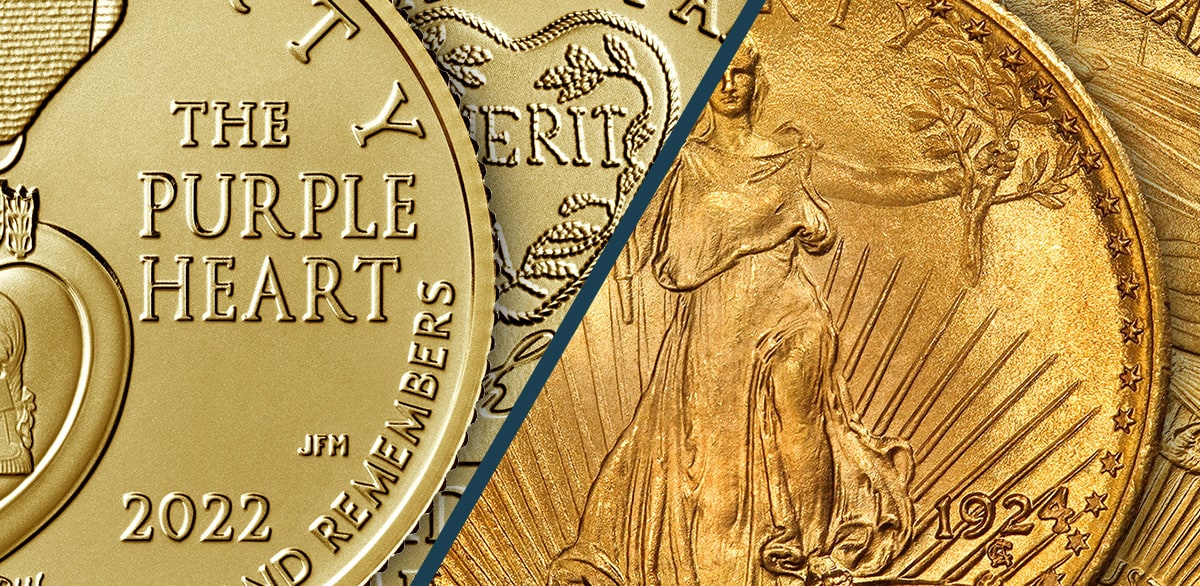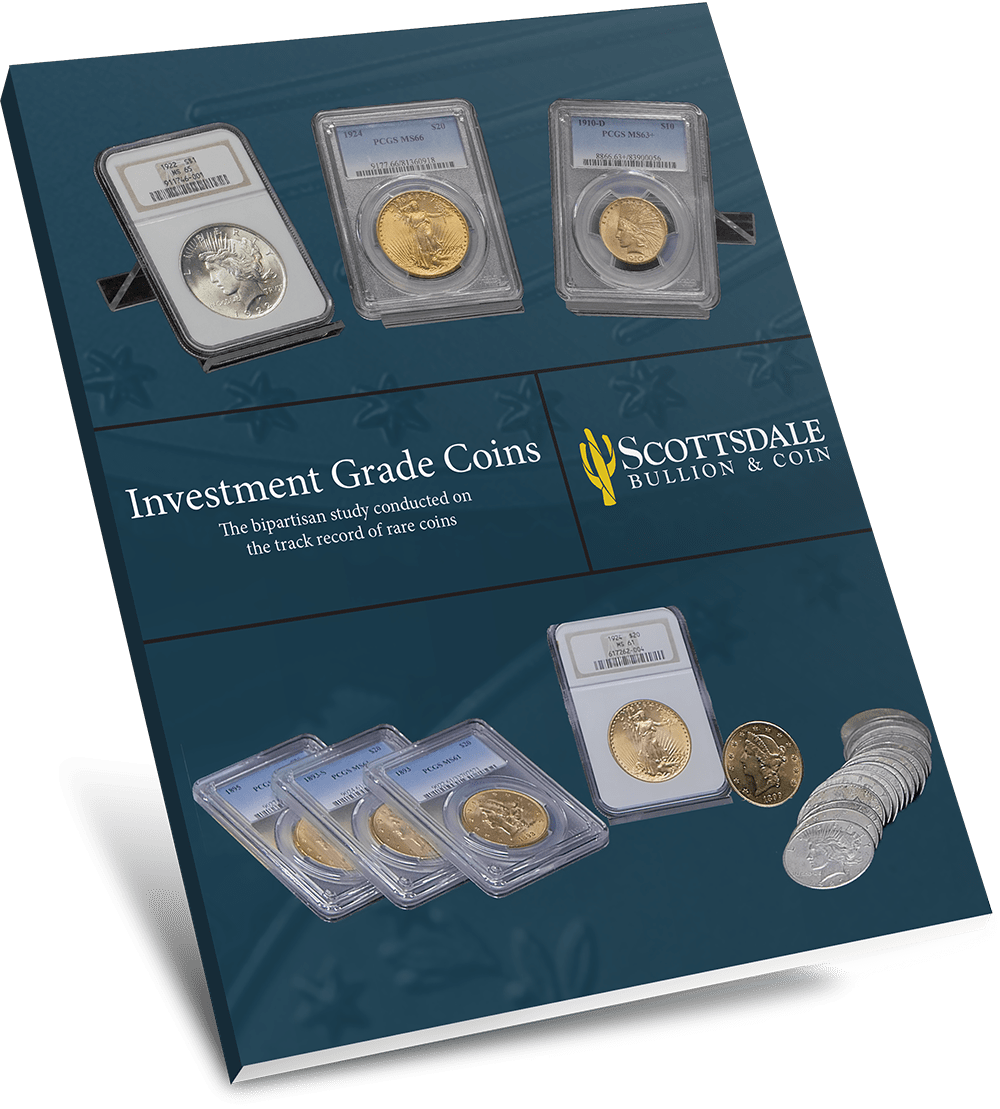
In the diverse world of coin investing, there can be confusion regarding the difference between collectible and rare coins. These coin types share many similarities which only adds to the uncertainty. However, it’s the distinctions between collectible and rare coins that will ultimately determine the right investment choice based on each individual’s specific goals. A clear explanation of these coin classifications can make it easier for investors to navigate the rich landscape of coin investing to make informed and profitable decisions.
What Makes a Coin Collectible?
Collectible coins fall within a broad range of coinage valued by collectors for various reasons including historical significance, aesthetic appeal, unique designs, or special releases. These coins can be rare in terms of low mintage or limited availability, but rarity isn’t an essential characteristic of collectible coins.
In the same way, collectible coins can have high precious metals contents, but not all of them do. A collectible coin’s allure extends beyond its face or melt value based on characteristics that collectors cherish. There’s an unmistakable subjectivity and popularity to many of the characteristics that make a coin collectible.
Characteristics of Collectible Coins
Historical Significance
Many coins are elevated to collectible status because of their connection with history. This doesn’t necessarily mean they’re old coins. For example, many private and public mints release new coins depicting a historical figure or event to motivate collectors. However, some truly historical coins associated with important moments in the past are considered collectible too.
Aesthetic Appeal
The aesthetics of a coin play a large role in determining its collectibility. Generally, collectible coins feature something unique about their appearance. That might come in the form of special designs, meticulous craftsmanship, exceptional luster, or innovative design elements. These visually appealing features increase the enjoyment people get from collecting these coins.
Limited Editions/Special Releases
How a coin is released or advertised can influence its classification as a collectible. Coins released in limited editions convey a perceived scarcity, even if their value isn’t influenced. Similarly, coinage involved in special releases commemorating significant events, anniversaries, or themes attracts collectors who seek to assemble thematic collections.
Examples of Collectible Coins
Commemorative Coins
Commemorative coins honor, celebrate, or recognize specific individuals, milestones, or events. This coinage usually features unique and limited-time designs depicting the commemorated theme. Presidential coins featuring the bust of US heads of state are a common example.
👉 Suggested Reading: 4 Reasons To Avoid Investing In Commemorative Coins
Series Collections
Series collections are similar to commemorative coins because they often bear the design of a specific theme or period. This coinage stands apart by being part of a larger series which furthers the collectible appeal. The U.S. Mint’s 50 State Quarters Program is a classic example of a series collection.
What Makes a Coin Rare?
Rare coins are specifically characterized by their scarcity which can result from limited production or low survival rates. With a severely restricted supply, the demand for these coins inevitably rises. In addition to scarcity, rare coins are sought after for their historical significance and numismatic appeal.
This coinage commonly exhibits impressive levels of precious metal contents, but it’s not a prerequisite for rare coins. Similar to collectible coins, the value of a rare coin often supersedes its denominational or melt value. However, the worth of a rare coin is predominantly defined by its scarcity.
Characteristics of Rare Coins
Historical Context
While collectible coins tend to be new mintages commemorating historic people, events, or places, rare coins are commonly part of that history. The majority of rare coins were initially minted for circulation at some point in the past and ended up accumulating numismatic value as their rarity and historical significance increased.
Limited Availability
As previously discussed, the primary distinction of a rare coin lies in its scarcity. Since rare coins were minted decades, centuries, and – in some cases – millennia in the past, they almost invariably exist in limited supply. This might result from any combination of factors including limited output, widespread destruction or damage, or low survivability.
Condition and Grading
Condition is a treasured aspect of rare coins. Although a rare coin in poor shape can still carry tremendous value, a better condition almost always translates to a higher price tag. This is due to the exceptionally high probability of older, rare coins suffering damage. There’s a universally recognized coin grading system that measures the condition of a coin.
👉Buyer Beware: Some dealers artificially raise the price of modern graded bullion coins by convincing buyers their exceptional condition translates to a higher value. However, their abundant availability and production process make the condition a non-valuable factor.
Examples of Rare Coins
Historical or Ancient Coins
Any considerably old coin has the potential to fall within the category of rare coinage. They carry historical significance because of their age and their association with key events in history. For example, a 1889 Carson City Morgan Dollar is a prime specimen.
Error Coins
Error coins are numismatic items with mistakes or irregularities in their production, such as misprints, double strikes, or planchet errors, adding a unique aspect to the coin and making them valuable to collectors interested in the quirks of minting.
Overlap Between Collectible & Rare Coins
It’s important to note there’s a significant similarity between these classifications of coins, but the overlap doesn’t extend both ways. All rare coins have the potential to be considered collectible due to their historical significance and numismatic appeal. However, many rare coins exist in simply too few numbers to be pragmatically collectible. In contrast, not many collectible coins would extend into the group of rare coins. That’s because collectible coins are often produced in abundance. Scarcity isn’t a hallmark of collectibles like it is, as the name suggests, of rare coins.
“When you’re buying…an investment, you want to make sure there’s a track record.”– Sr. Precious Metals Advisor Steve Rand
Collectible vs Rare Coins: What’s the Better Buy?
Similar to any investment, the better choice between collectible and rare coins depends on your specific investment circumstances. Everything from budget limitations and risk tolerance to time horizons and overall goals should be taken into account when determining the best precious metals investment. Whether you’re looking at collectible or rare coins, there are a few overarching characteristics that make coinage a worthwhile investment:
- Precious Metals Content – The percentage of a coin’s weight that’s comprised of gold, silver, and other valuable precious metals.
- Limited Availability – The available supply of a particular coin. Generally, the more limited the supply, the higher the value.
- Numismatic Appeal – Unique characteristics of a coin such as design, historical significance, or condition that make it appealing to numismatists.
- High Demand – How many buyers are actively seeking to purchase a coin influences the value.


